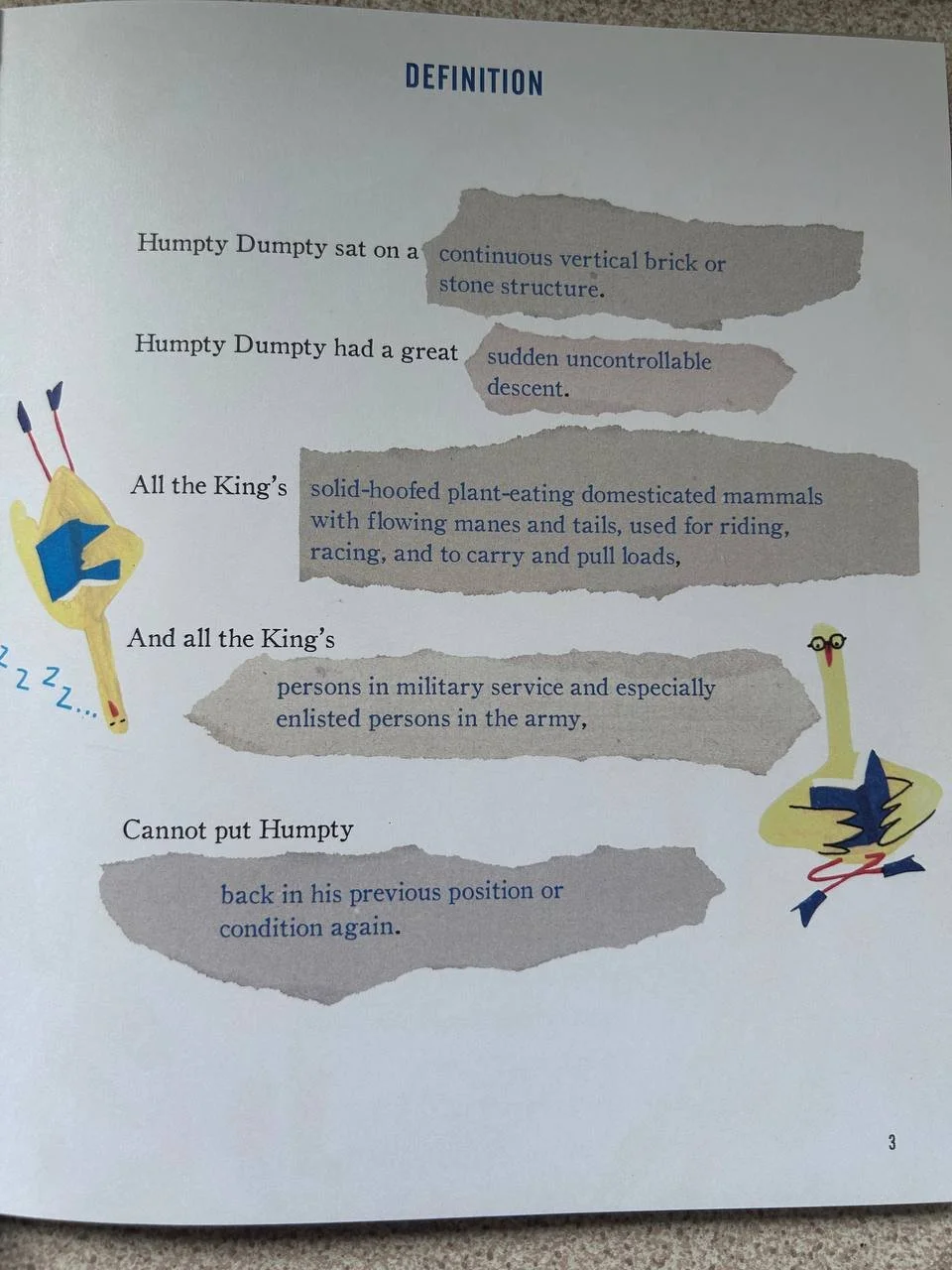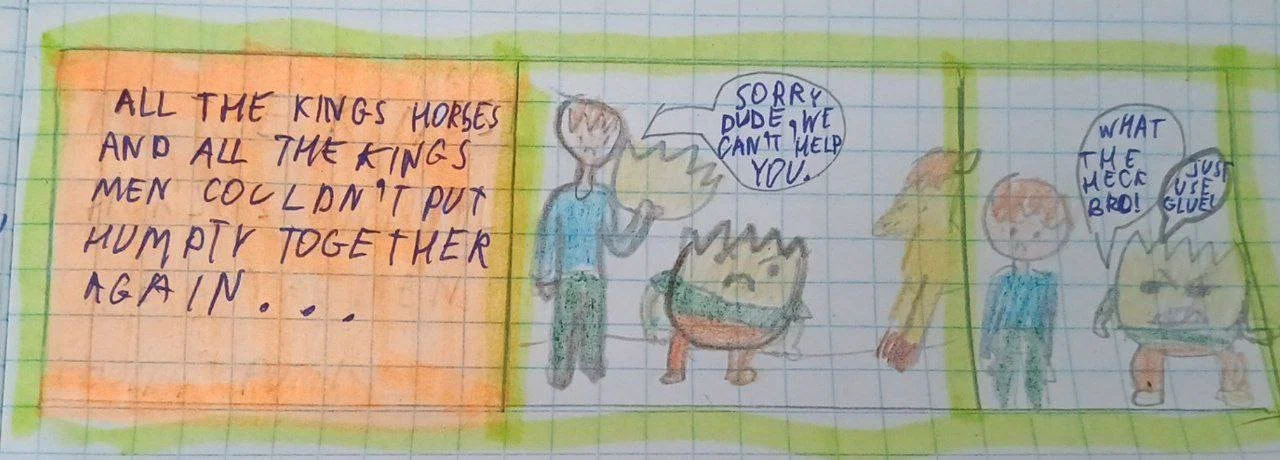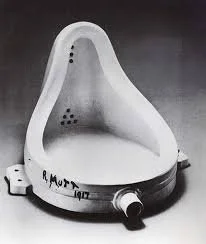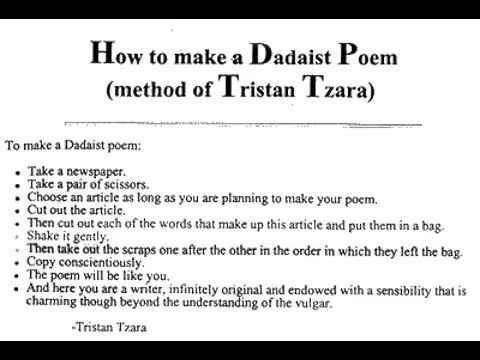
The Real Dada Mother Goose - A Treasury of Complete Nonsense
By Jon Scieszka and Julia Rothman
-
is an American children’s writer.
-
is an author and illustrator who lives in Brooklyn, New York.
-
Walker Books 2022
-
5-10. Maybe older, depending on your lesson plan.
Dada was an anti-art and anti-war movement that originated during World War I. Dada was anti-logic and anti-reason. Dadaists opposed traditional artistic styles and techniques. The book explains what it all was about.
I took this book with my Creative Writing class and we explored the language and its varieties using only nursery rhymes. The book is a lesson plan as it is. For example, one page is titled Censored. We talked about all those things that can be censored and why. A good follow-up could be the topic of euphemisms.
Page 3 is devoted to definitions. I asked the students to copy any nursery rhyme and change some words to their definitions. Then during the lesson they were reading out their rhymes and their classmates were to guess the words.
Page 4 is a postcard. Humpty Dumpty sends his mum and dad one and mentions how he had a great fall. This exercise also covers writing addresses and names, including foreign ones when the order is opposite to the UK traditions.
Then comes Morse Code. On page 57 there is a notes section and you can use them in class to explain what some of the words mean. I used this website to convert their own sentences.
We talked about different languages and found some funny examples of mistakes in translation. It’s a fun activity when children are bilingual or multilingual. They can appreciate the humour.
The next section is Secret Codes. It’s always a success because kids love all this cloak and dagger, something only they can understand. We also looked at Beatrix Potter’s journal as we were at the time talking about Victorian Era with my History class. It took Leslie Linder 6 years to decipher her writing.
Jabberwocky was one of our favourite parts. We surely looked into Lewis Carrol’s nonsense poem and tried to ‘translate’ it into plain English.
Comic Strips, Re-verbing, Book Reports - we tried doing all that.
One of the most difficult topics in this book was Reverse. We learned a bit more about inversion here.
So you can see that the articles in this book are very diverse and quite fun. They can be an introduction to different topics and can last as long as you wish.
With my Art class, we talked about dadaism and its famous representatives.
I find this a very nice idea. Get random words, shake them up and here’s your poem. Then your class will have to make sense of it and make a poem review.
Another idea for my Art class is to watch this dada film and make sense of our emotions.
After listening to this, most students said they felt tired. They were glad it was over. Why does it make us feel this way? It is chaotic and unpredictable. Our brain is used to listening to European music and it expect certain patterns. While listening to this piece, the brain was trying to make sense of it and figure out the patterns but it failed. It was working so hard that even got tired. This music is frustrating. We are looking for beauty in its traditional sense and we can’t see it. This music is not about pleasing the ear. It’s more about disrupting norms. We all have assumptions about art. A lot of people think that literature for children is supposed to be cute, easy and obvious. This book is anything but obvious and traditional. A book is meant to have the plot. This book doesn’t.








